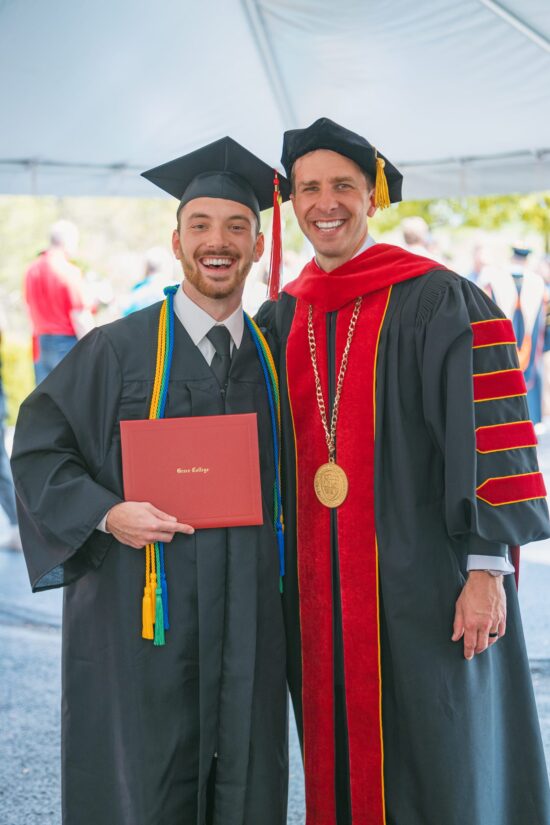How will Grace disperse the CARES Act money it received?
Grace received funds from the federal government as a part of the CARES Act. The first half of the funding we received totaled $775,851 and was to be distributed directly to students to help with expenses related to the disruption of campus operations due to the Coronavirus, such as food, housing, course materials, technology, health care, and child-care. The second half of the funding Grace received is considered the “institutional portion” of the CARES Act funding and may be used by the institution for COVID-19 related expenses it has incurred. The institutional portion Grace is receiving totals $775,850. While only required to distribute the first half of the CARES Act funding to students, Grace has decided to pass along the entire amount of the CARES Act funding to its students—both the student portion and the institutional portion— to help address the disruption to our students. More information regarding how Grace is distributing CARES Act funding to individual students is provided in FAQ 3 and 4. This is the most equitable way we know to ensure that we provide additional help for our students, who have the most financial need.
How will Grace help students to cover transitional costs related to COVID-19?
In order to best support students who have been displaced from campus, Grace has sent cash payments (via direct deposit or check) to residential students, as well as commuter students who are Pell or state grant eligible to help with expenses incurred as a result of this displacement. The goal of these funds is to help pay for food, housing, course materials, technology, health care, and other expenses incurred as a result of this transition away from campus. By sending cash directly to students, rather than just crediting their student accounts, students are able to use these funds immediately for any needed living expenses.
How did Grace determine how much money to send to residential students?
The amounts of individual grants were based on a pro-rata schedule of the date when a student moved out of the dorms, with the average grant per student totaling $1,800. As described below, additional funding was provided to students who are Pell and/or State Grant recipients.
How did Grace determine how much money to send to students who are Pell grant eligible or receive state aid?
In addition to any grant provided to students who were displaced from campus, Grace provided a CARES Act grant via a direct deposit or check to any undergraduate student (Residential or Commuter) who has received a Pell or state grant this semester. The individual amounts provided to Pell eligible students and State Grant recipients was $150 and $100, respectively. If a student is both Pell eligible and a State Grant recipient, he or she received the greater of the two amounts, or $150. This was the most equitable way we knew to ensure that we provided additional help for our students who have the most financial need. This approach was in keeping with the recently published guidance from the U.S. Department of Education emphasizing the advisability of taking into account individual student needs in disbursing these funds.
What will happen to my unused flex dollars?
Grace issued credits to student accounts for their unused flex dollars.
Account credits can remain and be applied to future charges. If there is a credit balance on your account, you can request a distribution.
For graduating seniors, any credit balance on their accounts will be returned to the student.
As a student, if I don’t believe I will be able to return to Grace in fall 2020 because of financial need, what should I do?
Thanks to the generous support of donors, Grace has established a “Bring Them Back” fund to help new and returning students with financial aid for attending Grace. It is our desire to meet the most critical needs of our students during this time and to ensure they can continue and finish their education at Grace College. In order for Grace to best distribute these funds, returning students should complete this simple Financial Hardship Application and new students should contact their admissions counselor.

